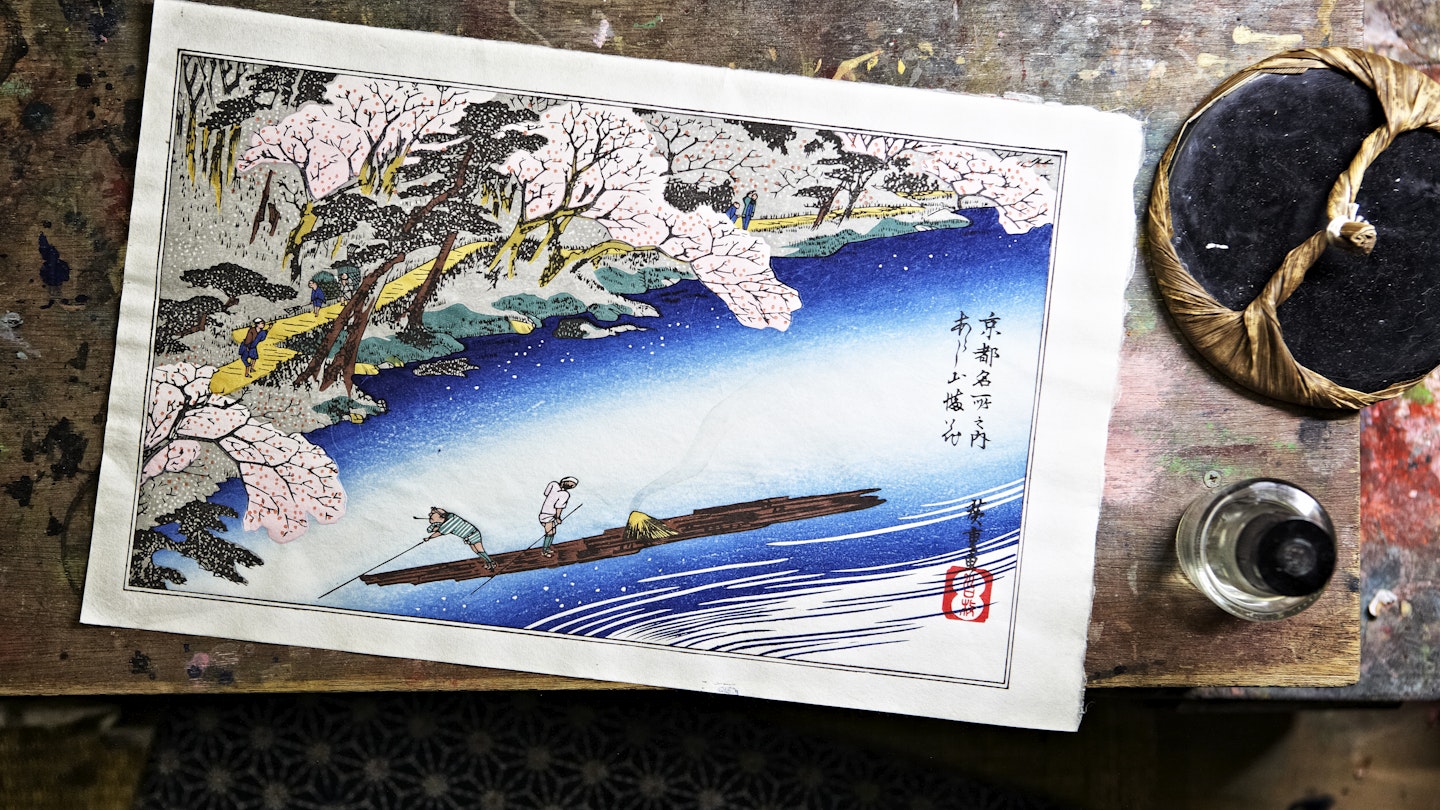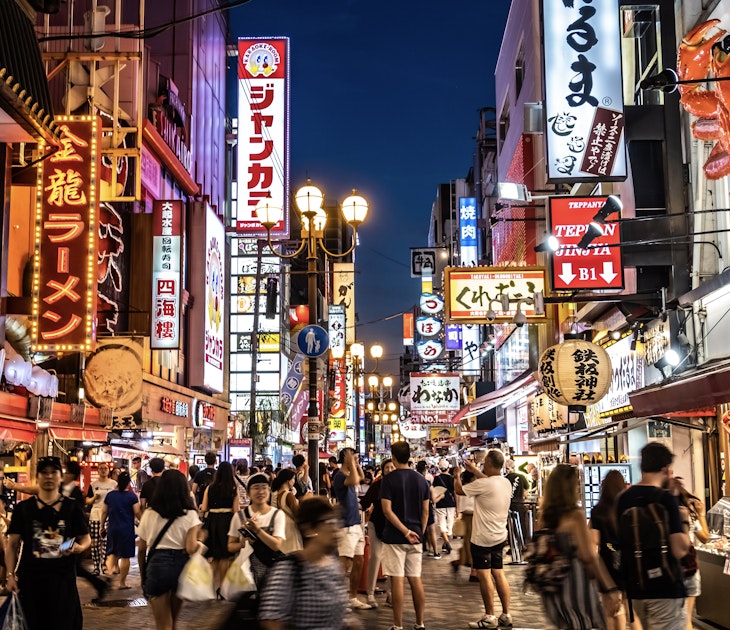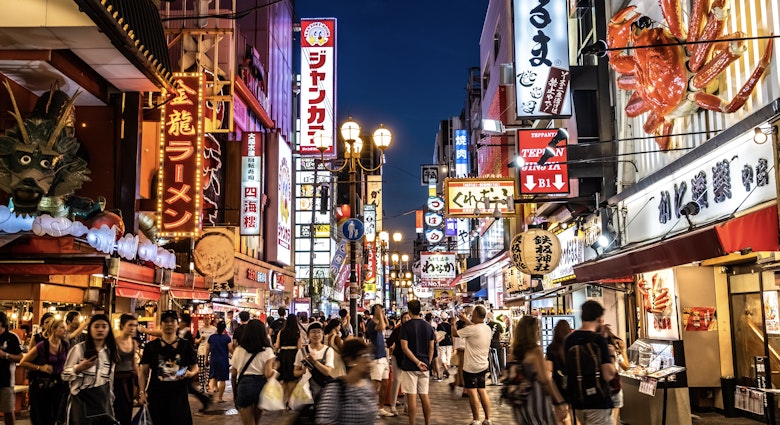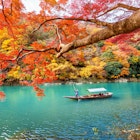Having served as the capital of Japan and the residence of the imperial family from 794 until 1868, Kyoto has a rich cultural heritage that’s still very much evident as you explore its atmospheric streets and serene temples.
Given its history, it’s no surprise that the city is also home to plenty of distinguished museums that are packed with artistic treasures and authentic local crafts. Here are seven of the best museums in Kyoto.
Atmosphere and sake at Gekkeikan Ōkura Sake Museum
Kyoto’s scenic Fushimi district is one of the top sake brewing areas in the country, with more than 40 sake breweries in operation thanks to its strategic location and the pure water of the nearby Hori River. The Gekkeikan Ōkura Sake Museum is housed in a beautifully preserved building owned by industry giant Gekkeikan, which dates back to 1637. Inside, you can explore exhibits and artifacts relating to the brewery’s history and the process of sake making.
For an extra fee, you can also tour the neighboring Uchigura Sake Brewery, where they still make rice wine and other tipples using traditional methods. Either way, your museum visit ends with a chance to sample some of the finished products, and you even get a small bottle to take home with you as a gift, making the small entrance fee a real bargain.
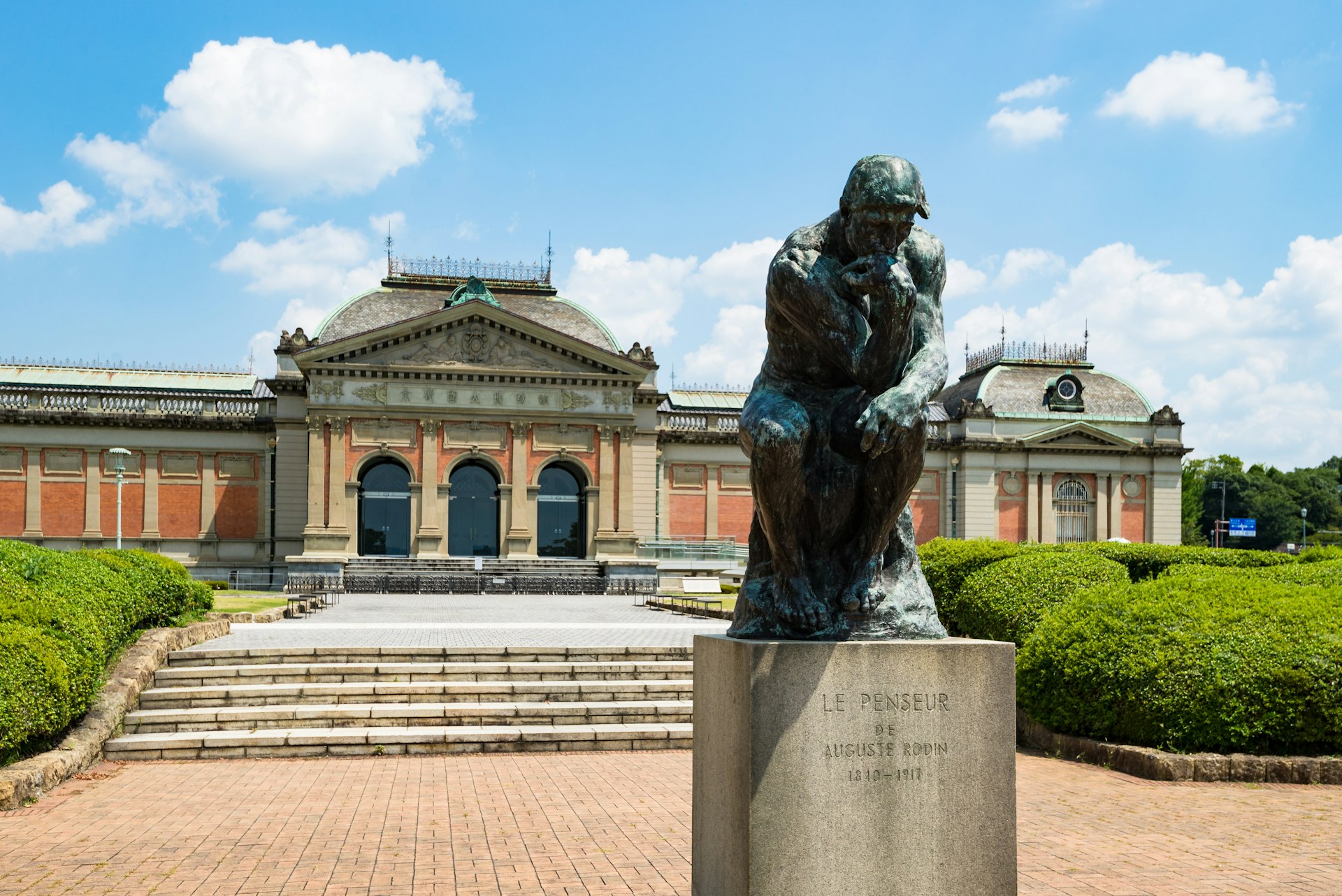
Go to Kyoto National Museum to see historical artifacts
Since opening its doors to its first exhibition in 1897, the Kyoto National Museum has grown to become one of the most prestigious museums in Japan. The permanent collection includes a wide variety of paintings, textiles, ceramics, lacquerware, metalwork, calligraphy and archaeological relics, which are displayed in rotating exhibitions in the Heisei Chishinkan wing.
Opened in 2014, this spacious building was designed by renowned architect Taniguchi Yoshio. It stands in wonderful contrast to Katayama Tokuma’s original red-brick Meiji Kotokan hall, which still functions as a symbol of the museum.
The biggest draws are often the temporary special exhibitions, so it’s advisable to avoid those on weekends because they can get busy. Even the grounds themselves have plenty to explore, including a traditional teahouse, sculpture gardens and a pleasant water fountain overlooked by a replica of Rodin’s iconic Thinker.
Traditional culture is explored at the Kyoto Museum of Crafts and Design
Also known as Fureai-Kan, the Kyoto Museum of Crafts and Design is a fantastic place to visit if you want to find out more about the city’s many traditional arts and crafts. The permanent exhibition brings together all 74 (yes, 74!) categories of Kyoto’s traditional artistic industries, from folding fans and pottery to bamboo flutes, paper umbrellas and lanterns. The displays feature some of the materials, tools and processes used, as well as showcasing the finished works themselves.
Occasional special exhibitions focus on a particular type of craft, and during workshops and regular craft demonstrations, you have the rare opportunity to watch skilled artisans at work. Kyoto is a city that’s rightly proud of its artistic heritage, and after a wander around this little museum, you’ll be captivated by it too.

Comic book fans flock to Kyoto International Manga Museum
Housed in a former elementary school, the Kyoto International Manga Museum is well worth checking out if you’re a fan of Japanese comic books or graphic novels. Explore a number of permanent and temporary exhibitions on the art form, as well as a mesmerizing “Wall of Manga” lined with some 50,000 books that you can browse inside or take out into the courtyard to read. While the majority of volumes are in Japanese, the Manga Expo section has an ever-growing selection of translated and international works.
If you visit on a weekend, you can watch artists at work in the Manga Studio. Head to Portrait Corner to have an anime-style picture of yourself drawn by one of the resident manga artists. The museum also puts on manga drawing workshops and occasional performances of kamishibai, a traditional form of Japanese street theater that uses pictures to tell stories.
Best museum for Japanese art? Kyoto City Kyocera Museum of Art
Formerly named the Kyoto Municipal Museum of Art, the Kyoto City Kyocera Museum of Art is situated in a photogenic classical building close to Heian-jingū shrine. Recently renovated by some of Japan’s most renowned architects, the gallery has a fantastic permanent collection of around 3800 pieces by Kyoto artists. These include paintings in both Japanese and western styles, as well as ukiyo-e woodblock prints, sculptures, calligraphy and other crafts. The museum hosts a variety of special exhibitions that focus on specific artists, time periods or themes, as well as pop culture favorites such as Doraemon and Rurouni Kenshin. Stop by the cafe for some traditional local Kyoto sweets, or pick up one of their picnic sets if the weather’s good and enjoy lunch in the picturesque grounds.

Families and trainspotters will love Kyoto Railway Museum
Opened in 2016 with the aim of showcasing Japan’s history of railway innovation, the fun and interactive Kyoto Railway Museum is a superb choice for families as well as train enthusiasts. The three floors of displays and exhibits cover everything from railway uniforms and tools to the mysterious inner workings of ticket machines. The 30,000-sq-m (322,920 sq ft) site houses 53 retired trains to explore, including pristine vintage steam locomotives and sleek modern shinkansen (bullet trains). For a small extra fee, you can take a 10-minute ride in a passenger car pulled by an authentic steam train.
Back inside, don’t miss the driving simulator and intricate diorama where miniature trains whizz around an impressively detailed landscape. Those interested in the golden era of train travel should also check out the Nijo Station Building on the way out, a charming wooden property that dates back to 1904 and now hosts the museum’s gift shop.
Contemporary art fans head to National Museum of Modern Art, Kyoto
Kyoto’s National Museum of Modern Art sits right beside the towering red torii gate of Heian-jingū shrine. Housed in a striking cubic building designed by Pritzker Prize–winning architect Maki Fumihiko, the gallery’s collection mostly focuses on works by artists or artistic movements from Kyoto and the wider Kansai region. In addition to Japanese-style paintings, the rotating exhibitions feature watercolors, prints, oil paintings and photography, as well as crafts such as ceramics, lacquerware, metalwork and textiles.
The museum also hosts regular special exhibitions and occasional workshops, plus has a pleasant cafe with a terrace that overlooks the lovely Lake Biwa Canal. If you visit MoMAK after 5pm on a Friday or Saturday, you can enjoy a discounted night rate, and if you’ve visited the Kyoto City Kyocera Museum of Art on the same day, then you can benefit from a cheaper rate for the special exhibitions by showing your ticket stub.
You might also like:
Your guide to Kyoto's most beautiful parks
15 best things to do in Kyoto
The 9 best day trips from Kyoto

